NM Gov vetoes bill creating wildfire suppression and post-wildfire fund, perplexing sponsor4/17/2025 By Patrick Lohmann Courtesy of Source NM Gov. Michelle Lujan Grisham’s veto of a bill creating state funds for post-fire recovery and current wildfire suppression “deeply disappointed” House Bill 191 sponsor Rep. Nathan Small (D-Las Cruces), who is also one of the state budget’s main architects. Lujan Grisham said the $12 million the bill authorized didn’t provide enough money to even “put a dent” in post-wildfire recovery. Recovery from South Fork and Salt fires and ensuing floods last year in Ruidoso, for example, will cost more than $200 million, the governor noted in her veto message. Lujan Grisham also wrote that another new fund the bill created, designed to pay for the state’s wildfire suppression efforts, had no money in it at all and instead would have relied on federal reimbursements, “which have only gotten slower in recent months.” Lawmakers approved the HB191 amid concerns about the federal government’s capacity to suppress wildfires in New Mexico and elsewhere, thanks to federal funding cuts, and as the state beefs up its own crews of full-time and volunteer wildland firefighters. Also, most of New Mexico is experiencing above-average wildfire potential this month and through the rest of the summer, according to the latest forecasts. Small, who chairs the House Appropriations and Finance Committee, told Source New Mexico in a statement Monday that the governor’s veto was not just disappointing but also surprising given that the governor’s office was involved in crafting the legislation. As for her specific objections, Small said the $12 million was a “starting point” that nonetheless would have “made a significant difference to New Mexicans who will face the devastating impacts of the next wildfires in our state.” He also noted that while the governor vetoed the bill, she left its accompanying $12 million appropriation intact in the budget. As a result, money will “now sit unused” instead of helping communities respond and recover from wildfires, he said. “Unfortunately, New Mexicans will pay the price for the lack of action this year, but my colleagues and I will continue to fight to protect our communities from the catastrophic wildfires that continue to threaten our people, businesses, and lands.” Source has a pending request to the governor’s office to respond to Small’s comments and will update this story as necessary. State Forester Laura McCarthy, whose agency would have received the post-fire funds defended the concept behind HB191 as a way to budget for wildfire suppression, taking climate change into account and also preserving the governor’s ability to issue executive orders to pay for wildfire suppression on a case-by-case basis. But she also agreed with the governor’s criticism of the way HB191 created a fire suppression fund without putting any money in it. “The Governor’s veto message made clear that without funding for HB191, creating a wildfire suppression fund that relies on federal reimbursements or payments for state crews when they are on out-of-state assignments, does not set the program up for success,” she said in an emailed statement. Without the legislation, the state will have to pay for any costs to suppress wildfires this year through the use of executive orders, McCarthy said. The Forestry Division has said that is the wrong way for the state to proactively anticipate and budget for the “volatile but predictable expense” of wildfire suppression. Executive orders are handled on a case-by-case basis and capped at $750,000 at a time, often requiring multiple orders for the same natural disaster. McCarthy also said recruitment of state wildland firefighters is “going well,” and the state is anticipating full staffing ahead of increased wildfire activity expected in May and June. Despite the veto, Lujan Grisham noted that she signed Senate Bill 33, which creates guidelines and criteria for a new Wildfire Prepared Program, including grants and certifications for property owners to make structures less prone to wildfire damage. The governor said that bill achieves “similar objectives” to HB 191. “I fully support a revamped process to fund both pre- and post-wildfire maintenance,” she said. “I hope the Legislature will provide a meaningful way to accomplish that goal during the 2026 legislative session.” Which bills are now in law? The Legislature sent nearly 200 bills to Gov. Michelle Lujan Grisham during the 60-day legislative session. See which ones she signed, which ones she pocket-vetoed and which ones she vetoed with a message. Bill numbers in italics have emergency clauses, which means they go into effect the moment the governor signs them.
0 Comments
By Jessica Rath The Franklin Macfie House (Hobbit Hut) was officially added to the National Register of Historic Places on August 19, 2024. The National Register of Historic Places is the Nation's official list of cultural resources worthy of preservation. Authorized under the National Historic Preservation Act of 1966, the National Register is part of a national program to coordinate and support public and private efforts to identify, evaluate, and protect our historic and archeological resources. Properties listed in the Register include districts, sites, buildings, structures, and objects that are significant in American history, architecture, archeology, engineering, and culture. The National Register is administered by the National Park Service, which is part of the U.S. Department of the Interior. Read last year's article follows When Janice and Michael Quinn bought their property in Rio Chama near Medanales, they were quite intrigued by the strange and decidedly unique structure which was part of it: a small building without any straight lines. It looked like something that had grown out of the earth, with undulating curves, bulbous outcrops, round and colorful windows. It had been abandoned for a while and wasn’t in great shape; raccoons and other critters had moved in. Janice and Michael didn’t know much about who built it, but one thing was certain: it was something special that deserved to be restored. The Quinns started on a Sherlock-Holmes-inspired journey. Talking to neighbors and former residents, they managed to piece together the story of the original owner and builder of the Hobbit Hut, a man every bit as eccentric and colorful as the building: Franklin MacFie. An artist, musician, actor, performer, who single-handedly built the free-form house all by himself. Well, people helped him, neighbors and friends. But he designed and planned the dwelling all by himself, although he wasn’t an architect. I figured this would make a fascinating story for the Abiquiú News, and the Quinns kindly agreed to give me a grand tour of the Hut. Michael had been hard at work for weeks and months (“forever”, Janice corrected), sealing the roof which had several water leaks and renovating each room, to make it habitable. But first of all they shared some great news with me: on June 14, 2024, the Cultural Properties Review Committee listed the Franklin MacFie House in the State Register of Cultural Properties and recommended that the nomination be forwarded to the Keeper of the National Register for listing in the National Register of Historic Properties. With the help of New Mexico’s State and National Register Coordinator Steven Moffson, Janice and Michael had filled out a lengthy application to have the Hobbit Hut formally recognized as a site of historic relevance. If you’re interested, here is the link to the nomination; it has a lot more information than I could fit into this article. Why did they apply for this? I wanted to know. “Frankly, it just seemed like a good idea”, Michael told me. “I don't even remember how I discovered that we could apply – just looking around the internet, I guess. What do we hope to get out of it? We hope to get a plaque”, he laughs. “And then maybe some financial and professional help. Because we do everything ourselves. And we pay everything with cash, so it takes a long time. I think my primary goal is to preserve the building, and make sure that it stays a stable, viable building into the future when we’re gone”. One reason why the site is historically relevant may be the fact that it was built with a unique construction technique: Ferrocement. It’s a composite material which uses a skeletal framework of steel rods which is then covered by fine-meshed chicken wire and burlap, and lastly plastered with a layer of cement mortar. Although this is only between 1 3⁄4 and 2 1⁄2 inches thick, it’s an extremely strong shell: Michael claimed that one could drive a car on top of the roof, and it would not cave! Whether that’s indeed possible I have no idea, but a number of Franklin’s friends have been documented dancing happily on the roof. I got a better insight into the way Ferrocement was used when Janice and Michael took me on a tour of the house. The most pressing part of the work to be done is fixing the leaks, Michael explained. “This mesh makes Ferrocement work”, Janice added. “That's why it doesn’t have to be heavy concrete but can be thin. So this whole thing is made out of rebar, chicken wire, burlap, and Portland cement. It’s a wonderful way to build actually, and it's waterproof. They still have ships that the hull is built out of Ferrocement. There are huge stadiums in Europe which are built of Ferrocement. It's amazing, eco-friendly stuff”. Ships? Built with cement? This sounded somewhat counterintuitive (and I have to admit that I’m rather clueless as far as engineering is concerned). But sure enough, there’s even a Wikipedia page about Concrete Ships, click on the link for some interesting images. And hereyou can find some other amazing buildings made of Ferrocement. From the outside, it looked as if this would be some dark, cavelike abode. But once we stepped inside, I was surprised to see how light-filled and airy the house was! From the entrance, the living areas undulated in every direction, sloping down naturally, following the hillside. There were no straight lines anywhere, and the few dividing walls all had arches and openings. The house looked alive, breathing, moving, changing. I was utterly enchanted. Janice pointed to the ground: “All of this was dirt, which got muddy whenever it rained. Michael worked hard to install concrete floors; that was one of the first things he did”. Next, we looked at the kitchen, and Michael showed me everything that had been done so far, and his many future plans. “The electricity is here for a refrigerator; and there is a sink with a cabinet; and cabinets over there are on the backside of a closet which will be in the bathroom. There will be chairs here and a breakfast table. So, we could rent it out for a couple of months in the Summer; I have plans to put in a mini split system for heating and air conditioning”. “The bathroom will have a shower right here, a toilet there, and the sink, and the washer and dryer will be here, and a water heater”. By this time, after walking through different rooms and getting a better sense for all the amazing details – there were so many windows, for example, and every one was unique and different, some round, some arched, some colored glass church windows – I wanted to learn more about the man who built this. Franklin MacFie. I asked Janice and Michael how they learned about him, and what they learned. Janice told me: “We loved the Hut at first sight, and asked our neighbor Dean Jeffers who lives below the ditch to the south, what he knew about it. From him and another neighbor (Reynel Maestas, the one whose grandmother had owned all these properties), we heard lots of stories. Dean told us that Franklin had moved to Portugal to nurse his partner Jean Michel Belluc who died of AIDS. And that Franklin had died soon after that! That’s why Michael was so surprised to see a very much alive Franklin at our door in 2008!” They had met him! How exciting! I wanted to hear all about it. Michael had quite a story to tell. “We were sitting in the hot tub. And it was the time of year when the moon comes up and projects light out of all the windows and auto tail lights in the Hut. And we were thinking, ‘It's the spirit of Franklin’. The next morning I was home alone, and there was a knock at the door. And there's Franklin with one of his friends from Santa Fe, and the lady from Portugal”. Michael had told me earlier that Franklin had built a round cement and adobe addition to a house in Portugal (he traveled all over the world), and that he had wanted to show his friends from Portugal the house he had built much earlier in New Mexico. So this was that visit. “I opened the door and there's this guy and says ‘Hi, I'm Franklin MacFie’. I couldn’t believe my eyes! ‘Franklin MacFie! The rumors of your demise have been greatly exaggerated!’ was all I could say. He thought that was funny, and he explained that he was here with friends and he wanted to show them the hut. And if it was okay. I said, of course it's okay. Do you mind if I come along? And so we walked down there”. “They weren't here for very long, I don't think they had much time. But that's when the picture of Franklin and me by the window was taken”. “So that was my first connection with Franklin, before I knew anything about him. I didn't know he was sick at the time. I didn't know anything about him, except that he built that place. Which meant a lot to me. Many years later Carol Bondy was here and we talked about the Hut and Franklin. She did some research and found the WordPress website. And that's when we started learning all about Franklin's eccentricities, his life and accomplishments”. He died shortly after this visit. Please take a look at the site if you want to learn more about Franklin MacFie. It’s a memorial put together by some of his lifelong friends, celebrating the artist, film maker, world traveler, theater director (he organized the Espanola Valley Theater where he worked with teen drama students and played in “Bye, Bye Birdie” in Santa Fe in 1978), an altogether gifted and brilliant man who lived in New York City, San Francisco, New Mexico, Morocco, Turkey, Portugal, and lots of other places. I guess it’s more a labor of love and less of an organized historical document, but somehow this is totally fitting for Franklin’s character. Janice told me another funny story, which she and Michael heard from Ray Stevens, a life-long friend of Franklin’s.
“Franklin and his partner Jean Michel, who was French, wanted to make Camembert cheese. And they had a cow. Jean Michel called somebody up in Wisconsin who made cheeses and who also happened to be French. The story goes that they just talked fluidly in French for like 30 minutes on the phone, and Jean Michel got the recipes. And so they started making Camembert cheese. Jean Michel would go to Santa Fe, with his rounds of Camembert cheese and in scantily cut off leather shorts and sell them to restaurants in Santa Fe”. “And Ray told us that sometimes the cheese wouldn't sell and they would bring it back and mix in some herbs and things, reformat and go back to town to try to sell it again, for even more money!” Isn’t it strange to have such a strong connection with another person's life? To gradually learn more details about a unique, creative, and rather eccentric individual? Some people might think that the Franklin MacFie House is too weird and unconventional and not worth saving. I applaud the Quinns for recognizing Franklin’s vision and for putting so much effort into the preservation of the building. They see and understand its beauty. I hope they’ll get some funding so that they can finish this labor of love sooner, rather than later. If you have questions about the Hobbit Hut, or have personal stories to share, please email [email protected]. And thank you so much for showing me around, Janice and Michael – I’m glad I could learn something about Franklin and his original spirit. By Karima Alavi My last article, Laying a Foundation for the Future, recounted the hard, but enthusiastic, efforts of the early construction crew as they dug the Dar al Islam foundation by hand during Ramadan and built temporary structures such as an outdoor kitchen, and make-shift showers with solar heat. Sleeping in tents, cars, or homes, their work was moving right along. Until it wasn’t. A surprise visit from the New Mexico Construction Regulation and Licensing Department put a quick end to the work. The “Red Tag” came down, and the work was stopped for not having a Construction Permit. Bill Lumpkins to the Rescue By now, Abdur Ra’uf (Walter) Declerck was working as an administrator for Dar al Islam. He quickly learned that, though the Dar al Islam architect was the world-famous Hassan Fathy, the state wasn’t impressed. The project needed to be guided and approved by a New Mexico licensed architect, or it was not to proceed. They needed the help of someone who was highly regarded in the state, someone with status and influence. They turned, of course, to Bill Lumpkins of Santa Fe. Walter was in charge of reaching out to Lumpkins to seek his help. When I asked Walter how that went, his reply was, “I begged.”
Meanwhile, the New Mexico Construction Regulation and Licensing Department grew increasingly skeptical that Fathy’s famous domes, arches, and vaults, all held up by nothing more than mathematics, gravity, and faith, could possibly withstand the vigorous “Load Test” required by the state. Along Came the Egyptians After several months, enough work had been completed on the foundation and the walls of Dar al Islam, to bring in the “big guns” for a nearly two-week workshop on adobe construction. Traveling with Hassan Fathy were two Egyptian masons, Allahudeen and Muhammad, who had decades of experience building with adobe bricks. In fact, they were both thought to be in their late seventies by the time they arrived in Abiquiu. Special bricks were required for creating the many domes in the building. These custom-sized bricks were supplied by two local brickyards, one owned by an indigenous family, the other by a Hispanic family. Dar al Islam purchased an old Mercedes truck to transport thousands of heavy bricks to Abiquiu. The site was ready, and the crew awaited the arrival of the Egyptians. Abdur Rahim Lutz told me that one of the workers, Abdul Jami, picked up the two masons at Albuquerque Airport in his enormous Lincoln Town Car. From that moment on these two men, who literally traveled by donkey much of the time in Egypt, were enamored with what they viewed as the “big American car,” and gleefully managed to jump in again, any time Abdul Jami had an errand to run.
So, how does one calculate a detailed, accurate measurement of each circular layer in a dome while assuring that every ring of bricks would be just a bit smaller than the one set in place before? How does one guarantee that perfect reduction in size as the dome reaches higher while growing tighter and tighter toward the top? With a barrel of sand, a stick, and a string. That’s how. Set in the space that would eventually be the exact center beneath the dome was a metal barrel. A tall stick with a string was placed in the middle of the sand that filled the barrel. That string became the measuring tool that determined precisely how far away from the barrel the next circle of bricks would go. With each circle, the string was shortened. With each shortening, the delicate arch of the dome drew inward until the top of the dome was tight enough for just one more thing: a small skylight that topped the dome like a benevolent eye, glistening its sunlight onto those praying below. People have come from across the United States and other parts of the world to study this mosque that is renowned for its beauty, its simplicity, and its connection to similar adobe structures also designed by Hassan Fathy. Determined to bring the art of construction back to its roots, (the use of local materials rather than modern materials such as concrete) Fathy has influenced others around the world to follow his steps. One of his students, the American architect Simone Swan, founded the Adobe Alliance that carried on Hassan Fathy’s legacy. She has visited Dar al Islam several times. “This whole thing was fueled by Islam. It appealed to counter-culture people, those ready to exchange modern life for starry skies, prayer, and nature.” -Rahmah Lutz When the domes were finally completed, one requirement to obtain a permanent building permit from the State of New Mexico was to hire a structural engineer to perform a Load Test on the domes. This involved adding weights to the inside of the domes to assure that the structures didn’t collapse. A familiar touch of skepticism rose again with the arrival of the engineer and his crew. He emptied the building and performed the test. The dome stood strong and solid, so he added more weight as a precaution. Then more. Finally, he made the comment that the domes had passed “with flying colors.” From that point on, the Dar al Islam crew was able to move ahead under the protection of their much-coveted building permit. An Egyptian Mason’s Recipe for “A Proper Tea” Both masons, Allahudeen and Muhammad, expected a steady stream of tea while they worked at Dar al Islam. To satisfy this request, Rahmah Lutz and Khadijah Cashmere alternated between themselves to assure a steady supply of that hot beverage that was drunk by the gallon every day, despite the heat that pressed down on the New Mexico mesa. But there was a problem. According to Allahudeen, American tea wasn’t made correctly. He politely explained the correct recipe for a proper Egyptian tea:
Then, he discovered the tea recipe Rahman and Khadija were following and understood how these elders maintained their energy along with their enthusiasm.
A Chance Encounter During the Hajj to Makkah Many, many years after the construction of Abiquiu’s mosque, Abdur Rahim Lutz made the Hajj, or Pilgrimage, to Makkah. Within the crowd of two million believers, he spotted the familiar face of Allahudeen. Weakened by the years gone by, the Egyptian mason had entrusted his pilgrimage to the assistance of a personal guide who happened to speak English. Within minutes, the man from Luxor, Egypt, and the man from Abiquiu, New Mexico reconnected. When I asked Abdur Rahim what they talked about, his answer was: “Nothing. We just held hands and sat there for a long time, sharing our silence.” That circle of connection, reflected in the very structure of the Dar al Islam Mosque, was joined again in that crowded, noisy place where two old friends rediscovered the intimate power of silence. Please note: If you would like to view the 1980 film, Roofs Underfoot, about the early construction of the Abiquiu mosque and madressah (educational retreat facility), keep an eye on the Dar al Islam website: https://daralislam.org/ The site is being updated, and the video will be added in the process of that update. In Ecological Garden Design - Part One, I introduced Douglas Tallamy’s proposed Four Universal Landscape Ecological Goals. Dr. Tallamy, a conservation entomologist at University of Delaware, has spearheaded initiatives to promote ecologically oriented home landscape and garden practices which, he says, “… must now take a leading role in the future of conservation.”
“Our parks and preserves are vital, but … they are not large enough and are too isolated from each other to sustain for much longer the plants and animals that run our ecosystems.” Doug Tallamy, https://www.karenbussolini.com/restoring-insects-to-our-landscapes-every-yard-counts/ Tallamy’s Four Universal Landscape Ecological Goals address critical and interrelated aspects of landscape ecology as understood by an ecologist, but in a short form organized for a simpler understanding. The first of these goals is that they “must support a diverse community of pollinators throughout the growing season.” On this point, I found myself wondering such things as ‘How would I even know if I have a diverse community of pollinators?’, or ‘What exactly do the most special ones need throughout the growing season?’ After spending some time looking at various urban ecology studies, and their conclusions, I think it’s safe to say that although very interesting to ponder, such questions really aren’t that productive for the average non-scientist like myself. What does matter is that anyone interested in ecological gardening get familiar with their local native plants, especially local ‘keystone’ species, and perhaps some of their relative value to native pollinators. The rest naturally follows. In a nutshell, a functionally valuable ecological garden within it’s own special ecoregion, and micro-climate, would fundamentally look like, or be, a version of the closest surrounding example of undisturbed landscape in terms of native plant composition - all the way down to cryptobiotic soil. It’s almost that simple, and if you can pull off something like that you’re golden. Ecological gardening all relates back to the native plants that have coevolved with the native wildlife and pollinators (bees, butterflies, flies, wasps, beetles, bats, etc.) to survive within their soil and climate niche(s). “Native plants are core to the wildlife garden. Intentional use of native plants, which have formed symbiotic relationships with native wildlife over millions of years, creates the most productive and sustainable wildlife habitat. While some plants play a singular role for one or limited types of wildlife, others are essential to the life cycle of many species. The local species of these plants vary by ecoregion, that is, areas where ecosystems (and the type, quality, and quantity of environmental resources) are generally similar. Keystone plant genera are unique to local food webs within ecoregions. Remove keystone plants and the diversity and abundance of many essential insect species, which 96% of terrestrial birds rely on for food sources, will be diminished. The ecosystem collapses in a similar way that the removal of the “key” stone in ancient Roman arch will trigger its demise.” https://www.nwf.org/Native-Plant-Habitats/Plant-Native/Why-Native/Keystone-Plants-by-Ecoregion So, the very first thing you can do for landscape is to protect what’s naturally there, and not replace existing plants with something “better” (except invasive plants/weeds). For abused, damaged spaces, the second best thing is to recreate what is around you, or ‘rewild’, as best you can (beginning with eliminating invasive weeds). I’m particularly interested in how visual ‘framing’ and simple augmentation of preferred natural landscape features through design can help make rewilding and wild chaos, or even perceived ugliness ‘interesting’ and/or beautiful. There’s a really great article on visual framing here by Joan Iverson Nassauer here: https://drive.google.com/file/d/1U9NexhxJB30NLVKqBCut7_aQH_5JcH06/view For what are essentially garden spaces that will see ongoing human cultivation, there are a few additional pointers. These are special environments that ecologists are particularly interested in because they have increasing value as surrogate native habitat for that which has been, or will be permanently destroyed. 1) Bringing in pollinators begins with not destroying them through so much harmful maintenance: fall and spring clean up should be light (insects overwinter in plant debris); pesticides should be avoided; weedwacking should be avoided, etc. 2) Try to follow the 70/30 rule: Limit non-native plants to 30% of cultivated space. It seems that this same 30% should be targeted at providing nectar flowers during midsummer when wild plants are less productive with flowers. Maybe it’s your herb and veggie garden (mostly non-natives in this category) to native vegetation ratio. Whatever that looks like, it’s important for insects to be able to complete their lifecycle(s), and yes they can die of starvation. 3) Don’t take things too strictly, or quickly, and rip out healthy non-native plants because something has been put down as a general rule. Even a nice old healthy ‘trash’ tree such as an elm might be providing something very important for the time being. Lawns are not automatically wicked. 4) Be aware that the more elaborate hybridized flowers (double or more petal sets) are generally less useful to insects. “Several studies have shown that the explosion of petals that may delight gardeners can actually reduce the attractiveness of that flower to pollinators. This may be a result of lower nectar production as the plant puts its energy into making petals or it may be simply that the insects can’t get to the nectar or pollen. If you think a beautiful flower is one with a bee or butterfly on it, choose the simpler single blossoms as you make your plant selections.” https://extension.oregonstate.edu/gardening/pollinators/less-showy-flower-petals-mean-more-pollinators 5) Outside of invasive species, no one is saying that non-native plants are BAD, just that native plants are better from an ecological standpoint. One trick I’ve found that helps people tolerate some of the more wild and rangy natives is to combine them with closely related ‘nativars’ or with similar but fancier genera. I guess it’s kind of like hiding the monster in a pile of plushies. Planting a slightly ‘weedy’ looking Velvetweed (Gaura parviflora) with Whirling Butterflies (Gaura lindheimeri), or planting basic annual sunflower with a fancy hybrid sunflower works beautifully . 6) Layer. This happens to capture some seasonal patterns of dominant pollen sources as well. Taller fruit/nut producing trees and shrubs tend to flower first in spring. Here, that will be things like chokecherry, golden currant, serviceberry, new mexico privet, cottonwood, oak, willows, boxelder maple, wild plum, silver buffaloberry. In late spring-midsummer, it seems the wildflowers dominate. Some important ones are: penstemon, coreopsis, milkweed, clover, globemallow. In Fall, it seems many of the rangeland shrubs like chamisa, sage (all types), and snakeweed are taking over in flower and pollen production. Marilyn Phillips of The Abiquiu News Bloom Blog put together a great image catalog identifying local native flowering by month - linked here: https://www.rockymountainsflora.com/news/abiquiu/abiquiu-july.html. It’s a great tool because it allows someone less familiar with plants by name to explore ecological design planning with plants in bloom and serving pollinators across the months of the growing season. It’s just so much better than trying to decipher descriptives like ‘early spring’ or mid-summer’. We need more of this. Also, do check out one version of the Homegrown National Park keystone species by ecoregion chart here: https://www.nwf.org/-/media/Documents/PDFs/Garden-for-Wildlife/Keystone-Plants/NWF-GFW-keystone-plant-list-ecoregion-10-north-american-deserts.pdf. It’s really interesting to see how many insects depend on native plants. Fasten yer seatbelts: squalls be not just for pirates anymore. By Zach Hively Listen up: under any of the available definitions of the term, I am the only man of the male gender in this vehicle. It’s a wonder I checked the weather before we left, considering I knew that two far more responsible non-men of a non-male gender would be escorting me. Had the weather looked bad, I would not have dared to speak up first about maybe considering possibly staying home. Snow does not intimidate us men of the male gender. Instead, I would have waited for the other two to make the smart choice. Then I would have tried to earn brownie points by Trusting Their Intuition and Supporting Their Decision. And then I would have suggested we get takeout. So, to recap: the call to drive from Colorado Springs to Denver—and back again!—with a thirty percent chance of just 0.01” of snow was both entirely sensible and entirely not mine to make. Anyway, there we are, dancing in Denver, an hour from our beds and a freezer stocked with late-night tater tots. And our designated navigator shows me the notification on her phone: a winter squall has blown across the interstate corridor, and everyone is advised not to brave it. What else can one do with a squall but brave it? No, for real. I don’t know what a squall is. But if pirates in the 1760s can survive them--without the aid of weather apps and G-maps—then we, who have celebrated International Talk Like a Pirate Day since approximately the 1770s, should be able to trust that it’ll all blow over in the next couple hours. Again: the two people here who are not men of the male gender are making sensible, informed, modern-day choices, which I endorse. These two drive this route every Tuesday night, except for six of the last eleven Tuesdays when the forecast looked sketchier than a raccoon with a switchblade. It just so happens that on this Tuesday, G-maps is now reporting that some semis have jackknifed on the interstate. These are causing delays but no real concerns. Semis are always jackknifing on interstates, even in purported first-world nations. So we head home. We reroute on some familiar-to-the-driver-who-is-also-my-girlfriend-so-of-course-I-trust-her back roads. G-maps says it’ll take us nearly two hours to get home that way. Not bad; where I live, I drive nearly two hours to stock up on bananas. I ride shotgun, despite being—as established—the only man of the male gender present. What can I say? We buck tradition. It looks as though the sailing be smooth, yarrr; there be no sign of squallage outside of some snow being stuck to these here metal street signs. Until, very suddenly, there be. We spot a short line of stopped taillights ahead. The taillights are easy to see, because we are not near any other source of light for miles on this two-lane back road. Our Backseat Navigator says that G-maps says there isn’t any significant delay. Then we hit ice. Our captain, my girlfriend, keeps going. She passes some of the stopped cars because, if we stop, we maybe can’t go again. Then we have to stop because a Ryder truck is skidding sideways up ahead. So we stop. On an uphill. With drop-offs on either side. And a pickup truck stops right behind us. And a sporty little Lexus, almost certainly with features like “turbo,” gets cute trying to go around the Ryder and slides off the road at the top of the hill. We are—in a family-friendly word—stucked. So stucked. A stream of cars with the same idea as our squall-braving captain passes us in the icy left lane, only to get stucked themselves behind the Ryder truck they could see from half a nautical mile away because we could see it from half a nautical mile away, only it wasn’t quite so stucked yet when we saw it. As if all this weren’t treacherous enough, the wind is quite possibly still squalling out there, too. (I don’t know the threshold for squall winds.) All the cars now stuck in the left lane, many of which (entirely coincidentally I’m sure) have Texas plates, are interfering with the valiant windblown attempts to winch the Lexus out of a ditch. The car thermometer appears stuck at 25°F. I don’t believe what it reads. (That’s degrees Fahrenheit, not degrees of the F-word I am hearing many times from the rest of the crew.) It's not safe, or even possible, for us to turn around. No room to try going forward, because we have no room to slide backward. Oh, and I should mention that of the three of us I am dressed most appropriately for our predicament: I am wearing slacks, not engineered for winter squalls but at least my legs are covered. And I, as passenger, have one critical responsibility: I must choose whether to ration the water remaining in my bottle for the hours, possibly days, of being stranded to come; or, to go ahead and, erm, make the bottle available for all three of our uses, which we might need after finishing the water left in it. Some hours in, time has ceased to have any more meaning than the tater tots we cannot reach. This is when our captain looks deep into my despairing eyes and asks me if I will drive. I—again, the only man present—am man enough not to give any answer at all for some long, stone-faced, manly moments. And then I am man enough to say, “I will … if you really, really, REALLY need me to.” It’s true that I would. It’s also true that, with me at the helm, we might remain completely stucked on that hill. Even after the sun rises and the ice melts. Even after tow trucks have cleared all the Lexuses and Texans. Because I carry a truth deep within me. And I watch as our captain realizes it, in real time. Her face dramatizes a masterclass in rational thinking. She learned to drive in Michigan. This car is her car. Her insurance rates are herinsurance rates. And her valiant passenger, in car and in life? He learned to drive in New Mexico. Albuquerque has, according to legend, only one snowplow—and most winters, one snowplow too many. She might be wearing a pink and turquoise skirt. But, avast ye hearties, she is also the only one here wearing pants. She doesn’t ask me again. But that’s not to say I am worthless.
As a matter of record, I have a litany of motivational phrases that I am certain everyone in this car appreciates. I also now have an empty water bottle that comes in very handy. Right after I brave the squall to dump it out—a squall that is definitely still squalling and definitely well under twenty-five degrees—the Ryder truck gets enough unstucked for the rescued Lexus to blow by it and for our captain to find just enough traction to get us up the hill and holy fishtails we are on our way. We are on our way very slowly, but we are moving. Our Backseat Navigator continues reassuring us with G-maps’ time estimates, which we ignore because even while being perilously stucked it told us we’d be home soon. I now become, functionally, the Lane Assist Feature. The squall winds are blowing squall snow across the icy squall road, making for some vertigo for the captain. “You’re good” becomes my mantra. “You’re good, you’re good, you’re good, you’re good, you’re good, you’re veering left but you’re good, you’re good, you’re good,” and I’m soon so lost in tracking that hidden white line that I forget to keep using my motivational phrases. This is the most alert I have ever been in a vehicle moving less than ten miles per hour. I know I’m going to brag about our captain after this one. I’ll write about it so the whole world knows she saved our lives. When we make it to safe haven, I’ll tell everyone about how, right before we returned to the interstate, we passed a sign that warned of a downhill ahead with an 11% grade, which I didn’t even know was legal, and how apparently snowplows can’t handle 11% grades as evidenced by the road being suddenly and distinctly buried in thick white garbage, and how our captain feathered the brakes to her own chant of “Oh Fahrenheit oh Fahrenheit oh Fahrenheit oh Fahrenheit” until we made it safely to the bottom with no help whatsoever from the Lane Assist Feature. I swear I will tell that part of the story very flatteringly, if we make it home alive AND are all still speaking to one another. Which we do … … at 4:15 in the morning. The whole one-hour drive took five and a half hours. Five and a half hours. I, being the only man of the male gender still present, do the manliest thing I can think of and make everyone tea. Plus, we be hungry after braving that squall. We deserve chicken nuggets with our tater tots. Too bad none of us wants to ever look at anything frozen ever again. Yarr. Behind the Scenes If I remember rightly—which I may not—some of the last words my girlfriend murmured to me before we finally fell asleep around six that morning were You’re allowed to write about this. So I did. But it took a while, because this is not quite the usual style here at Zach Hively and Other Mishaps. And in case this was lost in the attempts to be lighthearted about a very not-lighthearted night: she really did keep us alive. For which I say to her: thank you. I like being alive with you, very much. By Sara Wright
My relationship with barred owls began when I built my little cabin in 2002. That first winter a pair hunted from the branches of two large pines situated not far from the living room windows. These are large and very beautiful owls with mole brown striped feathers and a wingspan up to 50 inches. I looked for them at dusk (although I also heard them during the day) and occasionally witnessed a strike, but most of time I watched them just sitting in wait until it got too dark. Of course, with asymmetrical ears that can triangulate exact locations of prey, most meals probably appeared at night. In the mornings I would go out to see if their hunting had been successful. The sight of those unmistakable wing prints imprinted on new snow never failed to move me, though I knew some creature had lost its life. Owls need to eat too. As early as January I would begin to hear barred owl calls. Too many sounds to describe except the hiss when pursued. The signature call that most people translate as ‘who cooks for you’ doesn’t work for me. I hear musical trills instead. The pair, they mate for life, frequently vocalized at dusk or at night during the following two months. The conversation seemed so complex and nuanced with an occasional ‘laugh’. After mating in March, the owls stopped calling until May or June when I would sometimes hear one during the daylight hours. Overall, I felt blessed. I loved these beautiful owls with their round faces and giant black orbs for eyes, the colors of the mole brown striped feathers, one of which was often left for me. In May or June, it was common to hear these owls being mobbed by crows and bluejays, so I often followed the cacophony and sometimes intercepted the intruders, but mostly a hapless owl would try to escape by flying into other heavily protected evergreens unsuccessfully. Although they hunted around here which at that time overlooked more field, I never discovered a nest assuming they had chosen an old hollow snag, crow or hawk nest further up the mountain. Later in the season, if I was fortunate, I would glimpse a youngster perched on a limb, but a parent was always nearby. These birds are excellent caregivers with the male feeding the female during the month-long incubation and then the family stays together for about six months. They eat small mammals, reptiles, amphibians, and insects and are preyed upon by larger birds like the many eagles we have around here. Great horned owls are the other major predator. These birds have a relatively small territory and mate for life. They return to the same nesting sites each year, so winter used to begin with me peering through the windows to see if they were around. I have no idea where they hunted during the rest of the year. If undisturbed barred owls roost quietly during the day preferring being close to water in mixed evergreen and deciduous forests like mine. However, in virtually all the literature I have read they prefer ‘old mature forests’ which I most definitely don’t have, so I was doubly grateful to have them because although my forest is mixed and I have plenty of water my forest was last cut maybe 50 years ago? Then one year I didn’t hear one barred owl sing all winter. Behind me all the forests were being cut, so although deeply disappointed I realized the owls were losing their habitat. The only place I continued to see them was in a large hemlock stand on a nearby logging road. When those trees were finally stripped away, I stopped seeing or hearing barred owls at all. By now my land was totally hemmed in except for one neighbor who logged only what he needed for his own use, a man who cares about his trees, but his trees were only a few years older than my young forest (I do have a small grove of hemlocks, yellow birches, sugar maples a few big pines, and a stand of black elm sitting in the middle of my swamp but so does he). Many years went by. Then three years ago I was suddenly serenaded by barred owls one December dusk. I couldn’t believe it. That winter I heard them call to the west of me. Yes, my forest had been rewilding, returning to its natural state, so the trees have grown. My woods across the brook were thriving. But still, the trees have a lifetime or two to become ‘mature,’ and besides I own only a fragment, not enough territory to support barred owls. Every other piece of land along this road has undergone a radical transformation. Most trees except for my one abutting tree caring neighbor are gone. When the barred owls raised a family here last year I was overjoyed to have them back. And if this spring is any indication perhaps this couple may be living here now somewhere across the brook, because I have been listening to barred owls all winter. In the beginning of March, I stood outside for at least 15 minutes one night to listen to an extended conversation between one pair. Mating calls, I knew them well. Then all went quiet. I’ll have to be patient until May or June to hear owls calling again. I have reached the sad conclusion that the the few that are left are returning to forest fragments - privately held lands - because they have no place else to go. Up until recently barred owls inhabited the Northeast and portions of New Mexico/ Mexico. But recently their range has extended into the western part of the United States, and the ‘bird police’ have condemned them as invasive. In Abiquiu New Mexico where I lived with owls for four years, I heard them call infrequently but I knew they were there and part of the local ecosystem. Unfortunately, New Mexico also considers these owls invasive. Barred owls according to the US Inland Fisheries and Wildlife Service, and Cornell’s Ornithology Department have determined that this western expansion is threatening the habitat of the rare spotted owl. The Migratory Bird Treaty Act is also on board with the following decision which has already been implemented as of 2025. Finalized in August 2024, the Barred Owl Management Strategy is the U.S. Fish and Wildlife Service's long-term plan to protect native spotted owls in Washington, Oregon and California from the invasive barred owl species. According to the U.S. Fish and Wildlife Service barred owls displace spotted owls, disrupt their nesting, compete for food and in some cases, have interbred or killed spotted owls. ‘The Barred Owl Management Strategy’ permits the lethal removal of barred owls by attracting the owls with recorded calls and then shooting them when they respond and approach. In areas where firearms are not allowed, barrel owls may be captured and euthanized. In all 500, 000 – half a million - barred owls will be killed over the next thirty years because it has been determined by the ‘experts’ that they are the problem. No one mentions that in the east barred owl habitat has all but disappeared. Take Maine as an example. Maine is considered to be the most heavily forested state, but no one talks about the size of the trees. The Maine Forest Service’s most recent survey found that only 7.2 percent of trees are in the thirteen to 21 -inch diameter, and only 0.5 percent are larger than 21 inches in diameter. Another way of saying the same thing is to state that ninety plus percent of our forests are full of trees less than a foot in diameter. We have less than 4 percent of what we now call late successional and old growth forest left in the state. But even more important is that overall, the structural and species biodiversity of our forests is being lost. Mature and ‘old growth’ (?) are more common in the west than in the east, particularly in the Northwest. ‘Invasive’? How idiotic. Barred owls are moving west because they have been forced to by human destruction. They need real forests to live in and to breed not hardwood sticks. Migrating west is a survival mechanism. It is this kind of thinking/doing that reveals our distain for nature, and the human belief that we are the ‘gods of the earth’ who know how nature works when in truth we know almost nothing at all.
Barred Owls roost quietly in forest trees during the day, though they can occasionally be heard calling in daylight hours. At night they hunt small animals, especially rodents, and give an instantly recognizable “Who cooks for you?” call. Barred Owls live in large, mature forests made up of both deciduous trees and evergreens, often near water. They nest in tree cavities. In the Northwest, Barred Owls have moved into old-growth coniferous forest, where they compete with the threatened Spotted Owl. In 2021, a disjunct population of Barred Owls in Mexico, long considered to be a subspecies of Barred Owl, was split and named Cinereous Owl (Strix sartorii). Barred Owls (Strix varia) were historically residents of eastern United States, southern Canada, and disjunct regions of south-central Mexico, but have expanded into western North America and now occur throughout the range of the Northern Spotted Owl (Strix occidentalis caurina) and California Spotted Owl What is the Barred Owl Management Strategy? Finalized in August 2024, the Barred Owl Management Strategy is the U.S. Fish and Wildlife Service's long-term plan to protect native spotted owls in Washington, Oregon and California from the invasive barred owl species. The northern spotted owl, native to the West Coast region, has been endangered since 1990. The species is listed as Near Threatened under the Endangered Species Act and according to the American Bird Conservancy, only about 15,000 spotted owls remain in the U.S. Barred owls, larger and more aggressive than spotted owls, have been invading the West Coast region since the 20th century, according to the U.S. Fish and Wildlife Service. Barred owls displace spotted owls, disrupt their nesting, compete for food and in some cases, have interbred or killed spotted owls. The Barred Owl Management Strategy permits the lethal removal of barred owls by attracting the owls with recorded calls and then shooting them when they respond and approach. In areas where firearms are not allowed, barrel owls may be captured and euthanized. These procedures will be conducted in less than half of the identified regions − more than 24 million acres − and may only be completed by specialists, not the general public. "The protocol is based on the experience gathered from several previous barred owl removal studies and is designed to ensure a quick, humane kill; minimize the potential for non-fatal injury to barred owls; and vastly reduce the potential for non-target species injury or death," the strategy reads. Advocates praise new law, say it establishes a necessary framework after U.S. Supreme Court’s Sackett decision By Hannah Grover Courtesy of NM Political Report Gov. Michelle Lujan Grisham signed a bill into law that advocates say will help restore the protections that waters in New Mexico lost following the U.S. Supreme Court’s decision in Sackett v. the U.S. Environmental Protection Agency.
The Sackett decision removed Clean Water Act protections from seasonal waterways. Due to the arid nature of the state, New Mexico was among those most impacted by the Sackett decision. Another reason why New Mexico was particularly impacted is that it is one of three states that rely on the EPA to oversee surface water permitting. Senate Bill 21 establishes a permitting system for waters that lost their protections following the Sackett decision and paves the way for the state to eventually take over the surface water permitting from the EPA. “New Mexico’s most precious resources are our streams, lakes, and wetlands. But this scarce resource is under singular attack,” Tannis Fox, senior attorney with Western Environmental Law Center, said in a statement. “This law establishes the necessary framework to protect our waters from pollution, and safeguard New Mexico’s communities, Tribal waters, acequias, wildlife habitat, and outdoor recreation economy now and for the future.” The New Mexico Acequia Association was among the groups pushing for the legislation, which it says is necessary to safeguard the ways of life in acequia communities. “Our land-based communities depend on clean water in our streams, headwaters, and wetlands to irrigate our fields and care for our livestock,” Paula Garcia, executive director of the New Mexico Acequia Association, said in a statement. “A state-based permitting system will help protect our acequias and farms for the future.” After the Sackett decision was announced, the group American Rivers listed all of the waters in New Mexico as 2024’s “Most Endangered River.” Emily Wolf, the Rio Grande coordinator with American Rivers Action Fund, said the Supreme Court’s ruling left 95% of the state’s waterways “vulnerable to pollution and degradation.” “With the signing of this bill, we will have a critical framework for clean water protections for all our waters, and communities, in New Mexico,” Wolf said in a statement. By Barbara Turner
I spotted several local Abiquiu, Medenales and El Rito folks amongst the thousands that attended the Hands Off protest against the Trump Administration at the Roundhouse on April 5th. It was heartening to feel our reach and passion around what is happening to our beautiful country. Many of Trump’s policies will affect us here locally. One of the most recent and stunning Trump administration proposals is to start selling off our public lands to private and corporate entities in an ongoing effort to not only reduce the federal deficit but to start a Sovereign Wealth Fund. In other words the value of our public lands would be determined by their potential market value and sold to the highest bidder. Our local public lands could potentially be removed from our access. A BBC article entitled, "The 3.5% RULE: How a Small Minority Can Change the World"came to mind in technicolor as I participated in this lively and peaceful protest. Citing research by Erica Chenoweth, a political scientist connected to Harvard University who studied hundreds of peaceful campaigns over the last century, the article states the knowable fact that "nonviolent protests are twice as likely to succeed as armed conflicts-and those engaging a threshold of 3.5 % of the population have never failed to bring about change”. As momentum grows here in New Mexico we should all take heart and bring others along with us. There is documented strength in our numbers. Note: Abiquiu/ Youngsville Indivisible Group . ( indivisible.org) will have it official kickoff meeting April 22 5:30 pm at the Abiquiu Inn. We have less than a week until Tax Day here in the United States, which means it’s time for our annual set of Tax Preparation Options for our fellow procrastinators, ADHDers, and everyone else who also forgot about filing taxes until reading and/or writing this sentence. We have hardly any more time to put this off! So let’s get to it, right after we look at this historic print that is titled “The Moment of Imagination” but that we interpret as a man unable to free himself from his chambers until he finishes his taxes. Option #1: PANIC and get those taxes finished just under the wire.
What wire? And why are we going under it? If it’s like a trip wire, which seems an apt metaphor for doing our taxes, isn’t it better to go over the wire, or around it, than to try and slip under it? These are the sorts of questions we have spent the last several months researching. Meanwhile, other people we have known have spent weeks doing their taxes. Not in the sense of “spending five minutes a day each day for several weeks to get everything in order in a manageable and unobtrusive way.” No: we mean literal weeks. These people we have known might be breathing easier right about now. So what? The rest of us have had the freedom to enjoy ourselves since January. We may not have ACTUALLY enjoyed ourselves since January, because we do things like looking up the origins of “under the wire” instead of having fun. But at least anxiously distracting ourselves into inaction beats doing our taxes. Until now. Now that we are down to single digits of days, we have little choice but to continue delaying until April 15, or maybe April 14 if we are feeling particularly plucky. Panic is how we get things done. Anything. Ever. At all. And our taxes will get done in those final minutes, because they have to. Option #2: PANIC and still don’t get those taxes anywhere near any wires. Let’s be real. This option might be more attainable for many of us. Especially those of us choosing—magnanimously, if we may say so—to sit here and write option trees for our fellow overwhelmed Americans instead of, say, cleaning the shed or practicing any of our myriad other procrastination techniques. Of note: You might think this Option #2 is more practical during this year’s tax season than during any other tax season so far. You might argue that, what with the IRS workforce about to be reduced by 20,000 staff members, your odds of getting away with executive dysfunctioning your taxes are higher than ever before. We cannot endorse such arguments. You see, we are not, legally speaking, qualified to comment with any authority or knowledge on this subject. So maybe you should not listen to us when we say that forgetting to file your taxes—which may well be a felony, even with a really good excuse—sounds like a perfectly reasonable outcome for you to reach on your own personal tax journey, independently and without any input on the matter from us. And you should definitely not listen to us when we say that you might reach this result (on your own!) for a number of reasons, among them because you find yourself suddenly, unexpectedly, and vertiginously pro-IRS at the moment, or because you just can’t even manage to do the dishes let alone interpret the entire tax code at this late moment in the tax season. Your decisions here are between you, your family, and your official tax professional. We cannot inject ourselves in that choice. Besides, we are not quite sure how we got to this point—we certainly didn’t set out to go anywhere we might be held culpable!—so let’s hurry on over to Option #3: There is no Option #3. There could be, and if we were a legitimate tax-advice-dispensing entity there would be. But those of us who delay preparing our taxes until we have one final afternoon to decide whether or not we are preparing our taxes this year are not the sort of people who need more options. Rather, we are the sort of people who need a clear and limited set of simple options for our panic to decide between. Because let’s face it: Once we learn we can file for extensions, nothing is getting done around here no matter what we say. The almost annual Bondy yard sale is scheduled for Saturday May 17th and Sunday May 18th.
Vendors donate to Northern Youth Project to participate and we include an area of donated items where proceeds will go to that organization. So clear out your clutter and set aside for this worthy project. Donations of items for NYP may be dropped off the prior weekend (May 10th and 11th) or setting up a time with us by emailing Carol Bondy at c[email protected] We are full up for vendors but if you want to participate and space opens up we’ll let you know. |
Submit your ideas for local feature articles
Profiles Gardening Recipes Observations Birding Essays Hiking AuthorsYou! Archives
October 2025
Categories
All
|
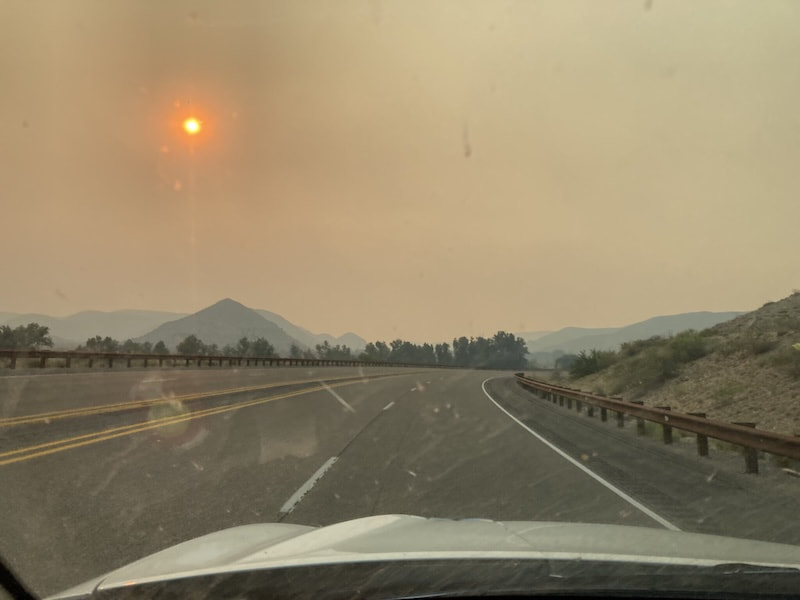

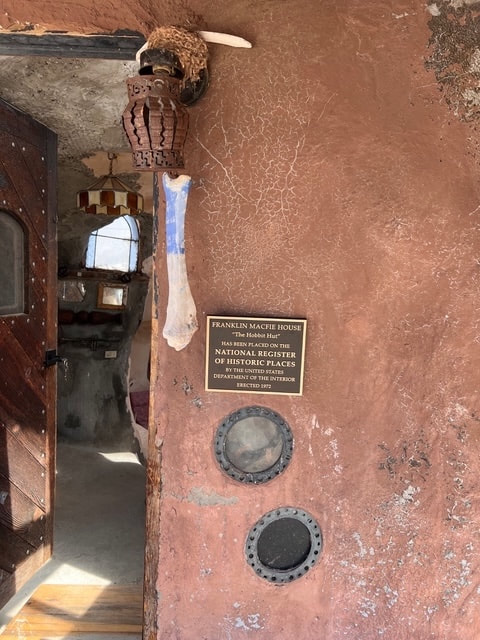
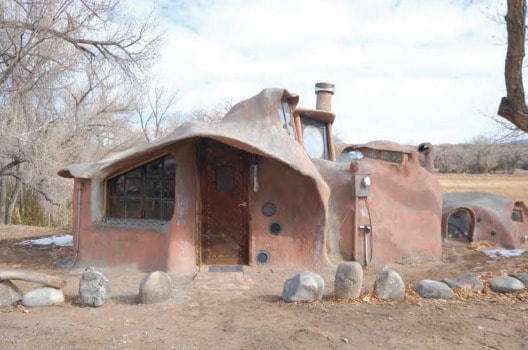
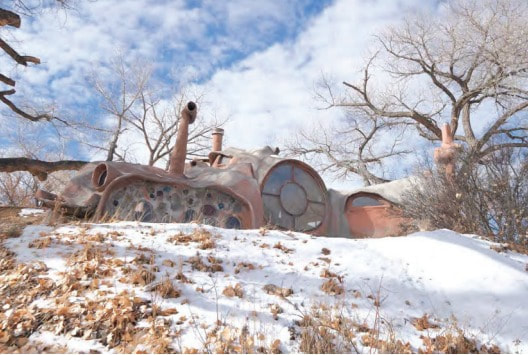
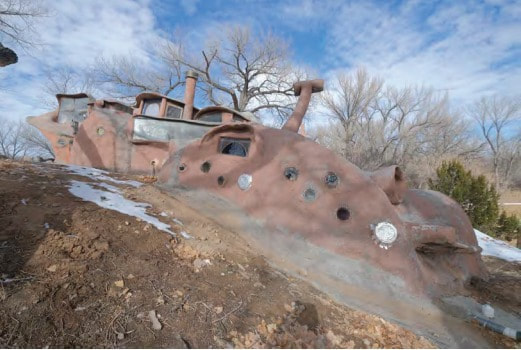
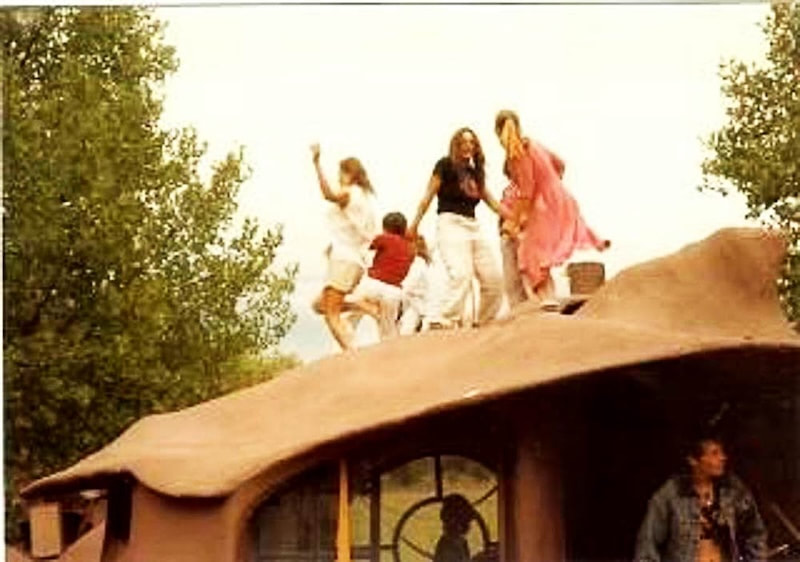
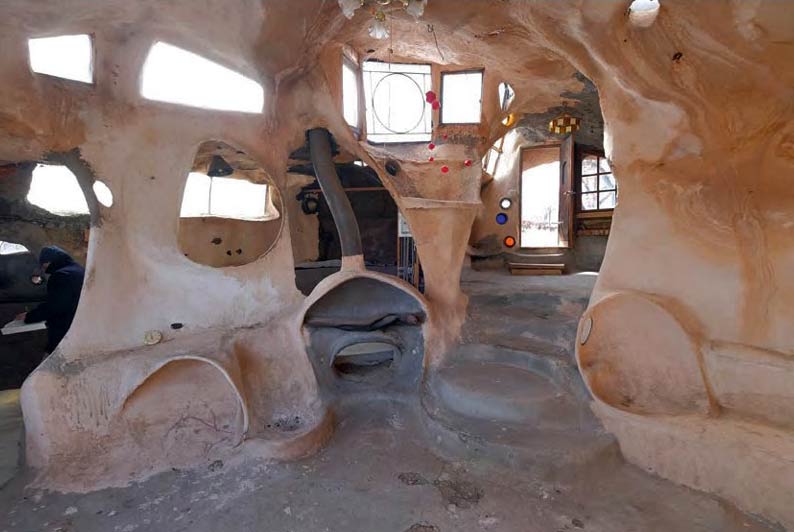
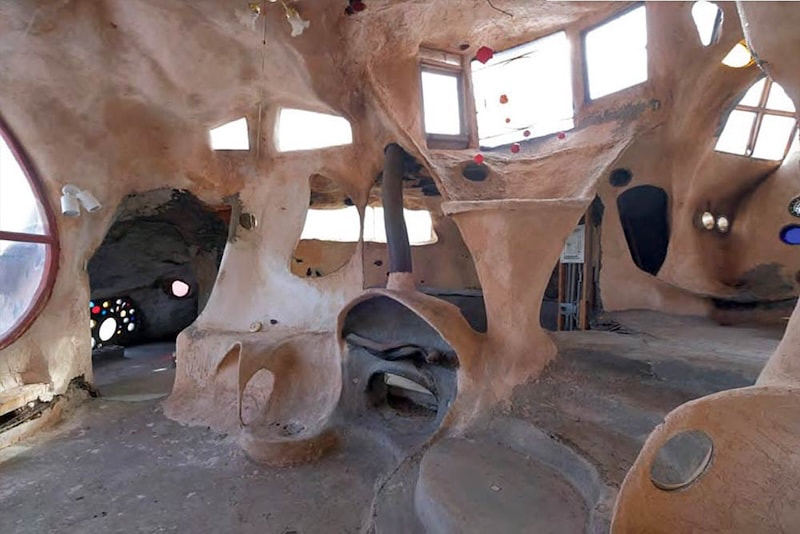
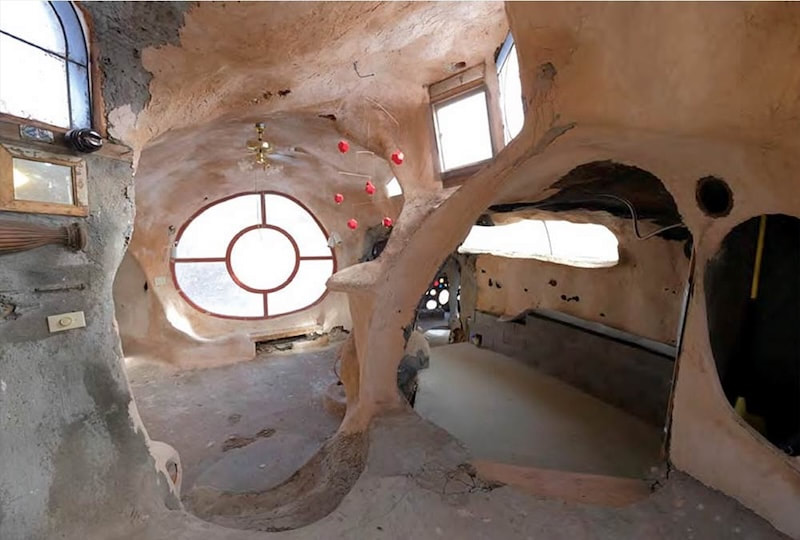


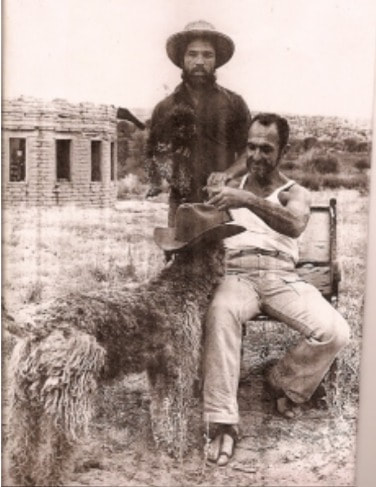


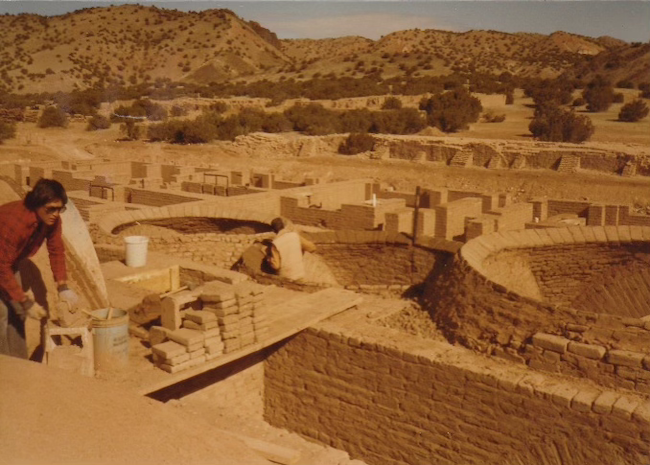

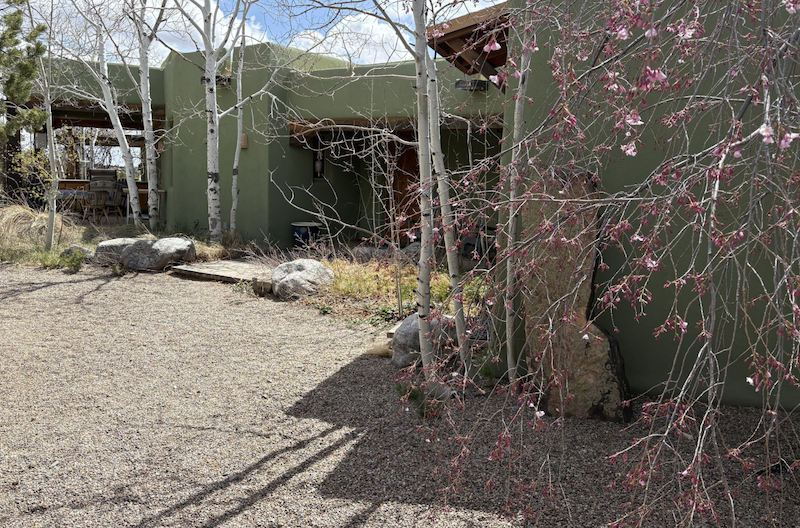




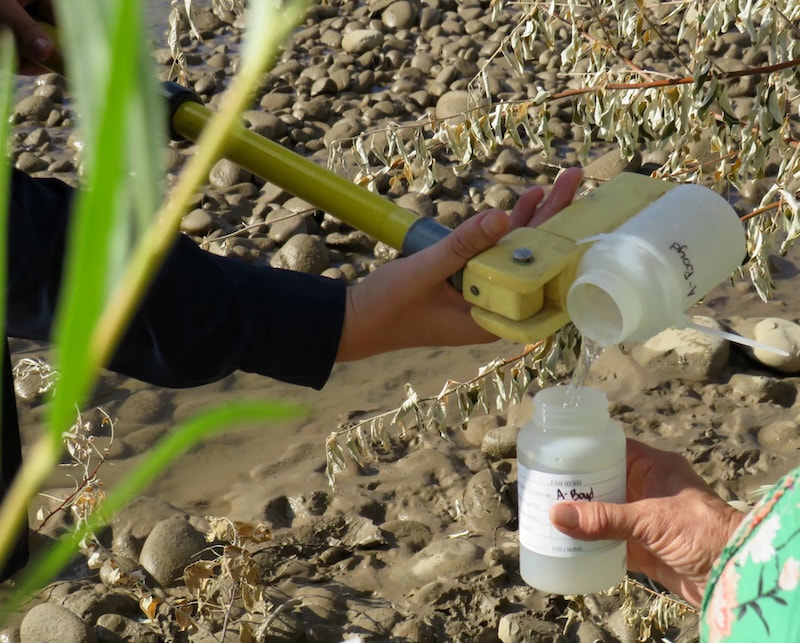






 RSS Feed
RSS Feed